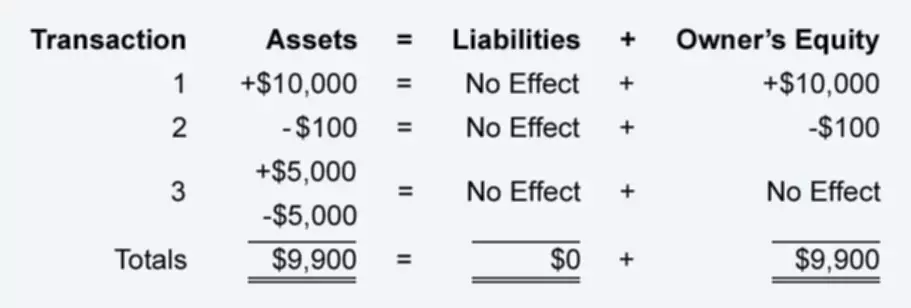ANR Definition: Average Net Receivables
Content
On the other hand, “net receivables” represents the amount of accounts receivable that is deemed to be truly collectible. For example, if company X already has an existing credit balance of $12,240.00 for allowance for doubtful accounts, it would only need to recognize an additional $20,000.00 to reflect the balance of $32,240.
- The accounts receivable turnover measures how often you collect the average amount of accounts receivable you are owed.
- This is because we want to have an ending balance of $3,000 for allowance for doubtful accounts.
- Any Principal Receivables which a Transferor is unable to transfer as provided in Section 2.11 shall not be included in calculating the amount of Principal Receivables.
- QuickBooks is the top accounting software we recommend to small businesses.
- The accounts receivable turnover ratio measures how efficiently your company collects debts.
Although numbers vary across industries, higher ratios are often preferable as they suggest faster turnover and healthier cash flow. Businesses that get paid faster tend to be in a better financial position. A high A/R turnover ratio means you collect from customers quickly, indicating that you have a strict credit policy and a solid collections process in place to ensure prompt payments. Similar to other financial ratios, the A/R turnover ratio is only one piece of information about a business’s ability to collect from its customers. Calculate Net Credit SalesNet credit sales is the revenue generated from goods or services sold on credit excluding the sales discount, sales allowance and sales return. It even amounts to the accounts receivables for a certain accounting period. Alongside other metrics such as the receivable turnover ratio and average collection period, it is used to measure a business’s effectiveness in collecting its accounts receivable.
Net Receivables – Explained
The financial ratio gives an indication of the firm’s liquidity by providing an average number of days required to convert receivables into cash. It is possible that within the average accounts receivable balances some receivables are 60, 90, or even 120 days or more past due that are skewing the average.
The receivables turnover ratio is used to calculate how well a company is managing their receivables. The lower the amount of uncollected monies from its operations, the higher this ratio will be. In contrast, if a company has more of its revenues awaiting receipt, the lower the ratio will be. The days’ sales in accounts receivable ratio tells you the number of days it took on average to collect the company’s accounts receivable during the past year. Under the percentage of sales method, a certain percentage of the net credit sales or total credit sales for the period is considered to be uncollectible. A bigger number can also point to better cash flow and a stronger balance sheet or income statement, balanced asset turnover and even stronger creditworthiness for your company.
How To Calculate Accounts Receivable Turnover Ratio
By knowing how quickly your invoices are generally paid, you can plan more strategically because you will have a better handle on what Average net receivables your future cash flow will be. You can improve your ratio by being more effective in your billing efforts and improving your cash flow.
- That might not be possible for all business but there many industries that are able to accept pre-payment before providing a good or service.
- Even some businesses that have strong credit and collection policies get these kinds of accounts from time to time.
- The average accounts receivable is the total of the beginning and ending accounts receivable divided by two.
- Net receivables are usually calculated as the total of money owed to a company by its customers minus bad debt or doubtful account .
- He is always short-handed and overworked, so he invoices customers whenever he can grab a free hour or two.
- Using average net accounts, you can find a lot of useful information to benefit your knowledge of company finances.
Left unchecked, this can lead to cash-flow crunches that can potentially jeopardize your company’s financial solvency. Tim worked as a tax professional for BKD, LLP before returning to school and receiving his Ph.D. from Penn State. He then taught tax and accounting to undergraduate and graduate students as an assistant professor at both the University of Nebraska-Omaha and Mississippi State University. Tim is a Certified QuickBooks Time Pro, QuickBooks ProAdvisor for both the Online and Desktop products, as well as a CPA with 25 years of experience.
Average Collection Period Calculator
The net receivables figure is usually computed by subtracting the allowance for doubtful accounts from the gross accounts receivable. Even some businesses that have strong credit and collection policies get these kinds of accounts from time to time. The best way to not deal with Accounts Receivable problems is not to have accounts receivable. That might not be possible for all business but there many industries that are able to accept pre-payment before providing a good or service. Acceptable current ratios vary from industry to industry and are generally between 1.5% and 3% for healthy businesses.
The AR Turnover Ratio is calculated by dividing net sales by average account receivables. Net sales is calculated as sales on credit – sales returns – sales allowances. Average accounts receivable is calculated as the sum of starting and ending receivables over a set period of time , divided by two. Net receivables are the total money owed to a company by its customers minus the money owed that will likely never be paid. Net receivables are often expressed as a percentage, and a higher percentage indicates a business has a greater ability to collect from its customers. For example, if a company estimates that 2% of its sales are never going to be paid, net receivables equal 98% (100% – 2%) of the accounts receivable . The receivables turnover ratio formula tells you how quickly a company is able to convert its accounts receivable into cash.
What Is the Meaning of Inventory-Receivables Turnover?
The receivables turnover ratio formula , sometimes referred to as accounts receivable turnover, is sales divided by the average of accounts receivables. Dr. https://accounting-services.net/ Blanchard is a dentist who accepts insurance payments from a limited number of insurers, and cash payments from patients not covered by those insurers.
How do you calculate average days in accounts receivable?
- Find the company's ending accounts receivables and credit sales for the year.
- Divide the credit sales by 365.
- Divide the ending accounts receivable by the credit sales per day to find the average days in receivables.
Gross accounts receivable is the sum of accounts receivable as recorded on the balance sheet. Gross accounts receivable minus allowance for bad debt is equal to net accounts receivable, or the actual value of the business’s accounts receivable as determined through its estimates. It records the total amount of money owed the company for delivery of goods and services minus the amount it doesn’t expect to collect. You can reduce the costs in account receivables and improve your ratio by encouraging cash sales, in which customers pay ahead or in cash, rather than on credit. Further, if your business is cyclical, your ratio may be skewed simply by the start and endpoint of your accounts receivable average. Compare it to Accounts Receivable Aging — a report that categorizes AR by the length of time an invoice has been outstanding — to see if you are getting an accurate AR turnover ratio. Net receivables are shown as an aggregated total on the company’s balance sheet.









